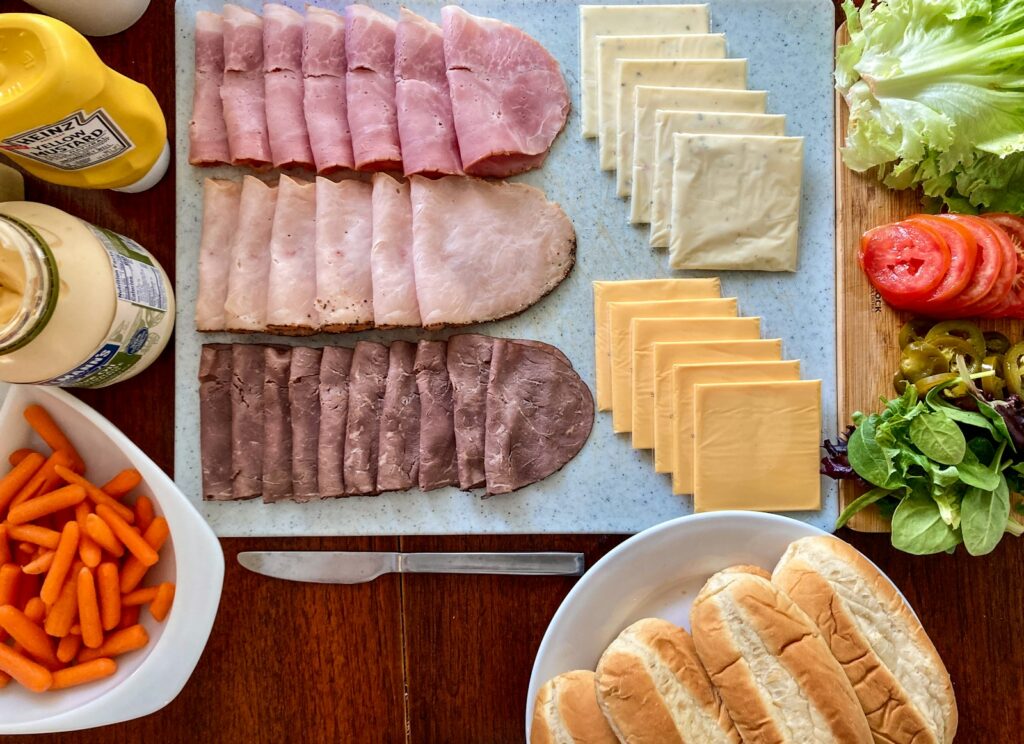There’s something about a sandwich that speaks to the soul. It’s a full meal, neatly packaged into a handheld delight, bursting with flavors and textures that can transport you to another place. And when it comes to sandwiches, the Italian hoagie is a masterpiece of culinary craftsmanship. It’s not just a sandwich; it’s an experience, a bite of history, and a testament to the art of sandwich-making.
What Is The Hoagie
Sandwiches might seem like a mundane topic to some, but for those who have tasted a truly exceptional one, they know it’s anything but. A luxurious meal, indeed, and I’m here to tell you about one that tops the charts: the hoagie. Now, I’m not talking about any hoagie. I’m referring to the Italian hoagie with aged provolone cheese on a seeded hard roll. It’s a game-changer, a palate pleaser, and quite possibly the best sandwich you’ll ever have.
Let’s set the scene. You’re walking down the streets of Philadelphia, the birthplace of the hoagie, and you’re hit with the aroma of freshly baked bread, the tang of aged cheese, and the savory scent of Italian meats. It’s irresistible. The Italian hoagie is a product of Italian-American culture, a delicious legacy left by Italian immigrants who graced the American culinary scene with their food traditions.
The Italian hoagie is not just any sandwich; it’s a carefully constructed work of art. To keep it classic, you’ve got to stick to the essentials and skip the frills. No mustard, no mayonnaise, no bacon, pickles, or sliced avocado. These ingredients might have their place, but it’s not in an Italian hoagie. The beauty of this sandwich lies in its simplicity and the quality of its ingredients.
Ingredients & Steps
The foundation of any great hoagie is the bread, and for an Italian hoagie, it has to be a 12-inch Italian-style roll. The roll should be sliced just right, creating a pocket to cradle all the delicious fillings. Then comes the layering: deli-sliced boiled ham, capicola, provolone cheese, and Genoa salami. Each meat is chosen for its distinct flavor and texture, contributing to the overall harmony of the sandwich.
The hoagie is adorned with shredded iceberg lettuce, thinly sliced tomato, and white onion. These fresh ingredients add a crispness and a bite that balance out the richness of the meats and cheese. A drizzle of red wine vinegar and oil, a sprinkle of salt, pepper, and Italian oregano, and you’ve got yourself a sandwich that sings with flavor. And if you’re feeling adventurous, throw in some hot or sweet peppers for an extra kick.
Let’s talk cheese. Provolone Dolce, to be precise. This aged pasta filata cheese hails from the Po Valley in northern Italy and is a key player in our hoagie. It’s smooth, mild, and full of character, providing the perfect creamy counterpoint to the savory meats. And when it comes to Provolone, there are two main types: Dolce (sweet) and Piccante (spicy). For our hoagie, we’re using Provolone Dolce for its mild flavor that complements rather than overpowers the other ingredients.
Assembling this sandwich is an act of love. You start by cutting the hoagie roll length-wise, drizzling it with extra virgin olive oil, and layering on the Provolone Dolce. Then come the meats, followed by the lettuce, onion, and peppers, seasoned with salt, peperoncini, oregano, and parsley. The result is a sandwich that’s not just a meal, but a moment to savor.

Substitutes and Creation
But what about those who prefer their sandwiches hot and melty? Fear not, for there’s a variation that will satisfy that craving too. Imagine taking the classic Italian hoagie and giving it a toasty twist. You layer on the provolone, meats, and veggies, then pop it under the broiler until the cheese is bubbling and the bread is toasted to perfection. Top it off with a homemade Italian dressing made with giardiniera juice for an extra zing, and you’ve got a hot hoagie that’s out of this world.
Provolone cheese is more than just a topping; it’s the fruit of devoted artisanship. Made with fresh milk from Friesian cows grazing near the Po river, this cheese is spun from stretched curd and aged to perfection. It’s a cheese that’s versatile, delicious whether melted or cold, and it’s the heart of our hoagie.
But what if you can’t find Provolone? There are substitutes that can step in without missing a beat. Fontina, with its mild and nutty flavor, or Mozzarella, fresh and reminiscent of young Provolone, can fill the role nicely. However, for the authentic experience, stick with Provolone.
Do not forget about the history of the hoagie. It’s a tale that takes us back to the 1950s in Philadelphia, where Italian migrants at Hog Island shipyard crafted this sandwich staple. From ‘Hog Island’ to ‘Hoggies’ and finally ‘hoagie’, the name evolved just as the sandwich did, from a simple meal for workers to a beloved icon of American cuisine.
The Italian hoagie with aged provolone cheese on a seeded hard roll is not just a sandwich; it’s a celebration of heritage, a blend of flavors that tells a story with every bite. It’s a reminder that sometimes, the simplest things in life are the most extraordinary. So next time you’re thinking about what to have for lunch, remember the Italian hoagie. It’s not just a good choice; it’s the best choice.
Related posts:
The Classic Italian Hoagie Recipe You Need in Your Life
Philly Provolone Hoagie: Done the Italian Way (Simple Recipe)
Italian Hot Hoagie Recipe





